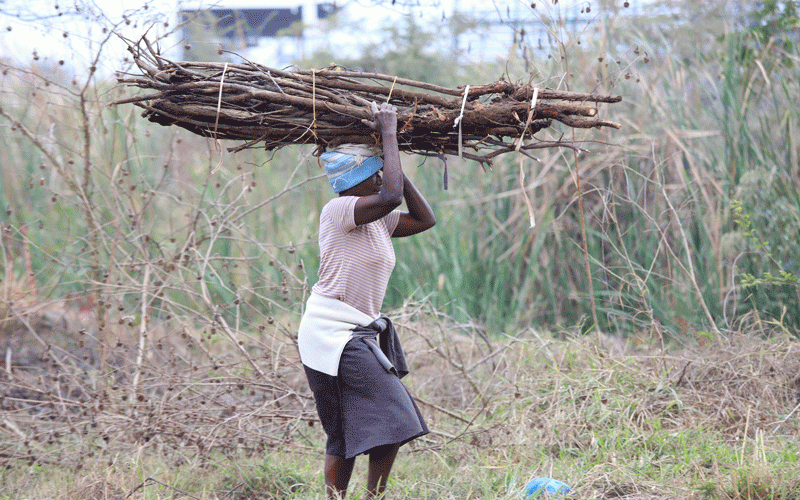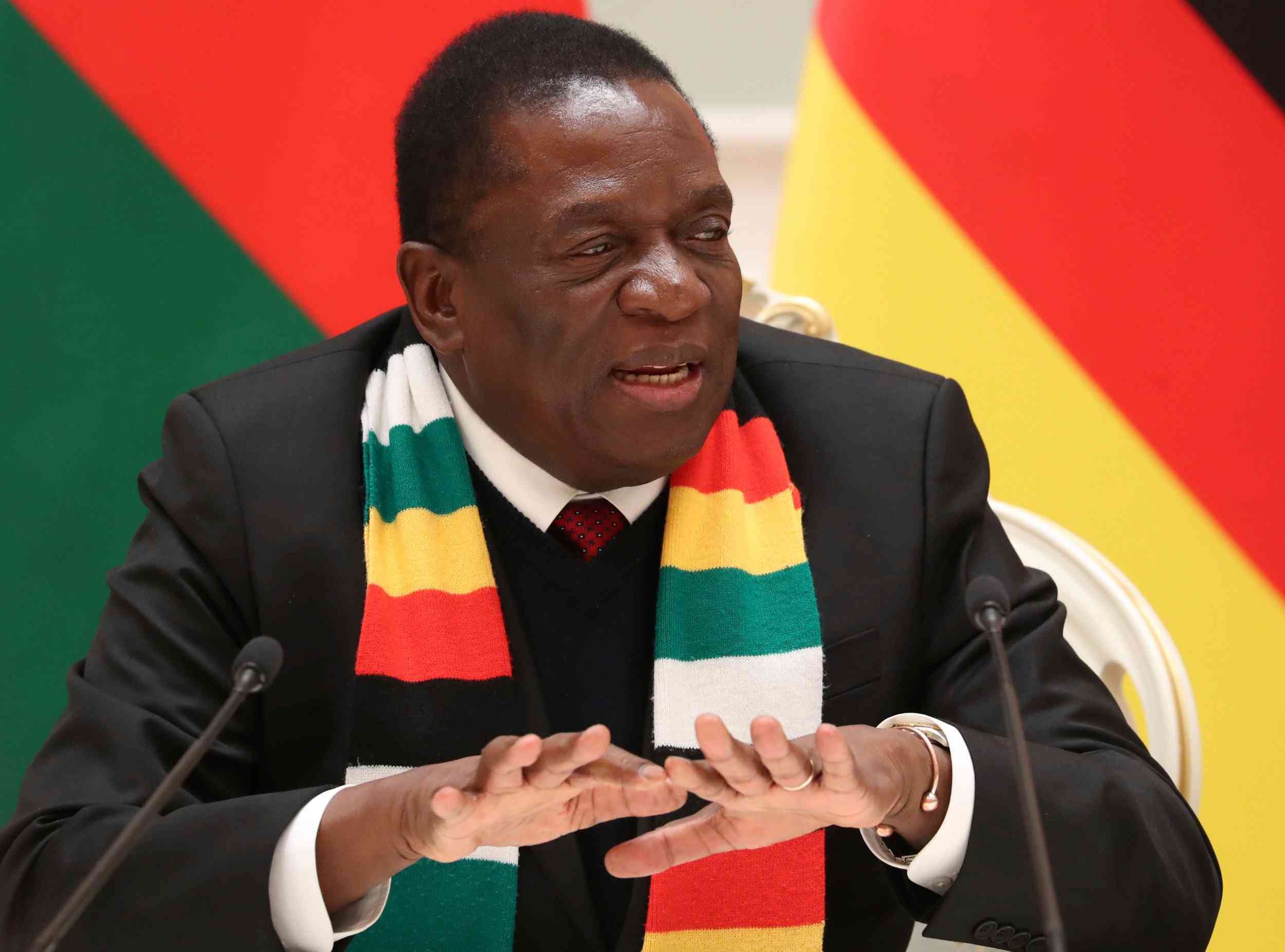
In most rural areas, evenings are marked by the flicker of fire or candles and the smoke of paraffin lamps.
“We want our children to study under proper lights, not candles,” said Edith Nhanha, a mother of three from Ngorima village under Chief Jiri in Gokwe South.
“If solar grids come here, it will change our lives. Even cooking with firewood is difficult — we spend hours collecting it.”
Like many rural families, Nhanha dreams of affordable electricity not only to power bulbs, but also to ease the burden of household chores and protect the environment from deforestation.
For rural teacher Ruth Moyo in Mberengwa, electricity is tied to dignity.
“When power comes, it means our schoolchildren can use computers, our clinic can store vaccines, and our farmers can irrigate their crops. That is real development,” she said.
According to the government data, as of 2024, 38% of the population lacked access to electricity, and over 61% of households relied on traditional biomass for cooking.
This energy poverty has disproportionately affected rural communities, women and youth, while constraining productivity and economic growth.
- New perspectives: Building capacity of agricultural players in Zim
- Vaccination programme brings relief to Midlands cattle farmers
- EU project brings smiles to Gokwe farmers
- I am not scared: AfDb chief shrugs off Africa food crisis
Keep Reading
In the wake of these challenges Zimbabwe has developed an energy compact with the African Development Bank (AfDB) and the World Bank under the Mission 300 initiative, whose aim is to ensure all citizens have access to reliable, affordable, and sustainable energy by 2030.
The US$5 billion Mission 300 is a joint initiative by the World Bank and the AfDB to connect 300 million people in Sub-Saharan Africa to electricity by 2030.
The plan also promises to deliver electricity to 3,1 million households and provide clean cooking solutions to 70% of the population by 2030 — a giant leap toward meeting Sustainable Development Goal 7 (Affordable & Clean Energy).
Apart from ensuring all citizens have access to reliable, affordable, and sustainable energy by 2030, the energy compact aims to facilitate public-private partnerships for investment mobilisation as well as contribute to climate goals and regional power market development.
Speaking of the energy compact, Energy minister July Moyo said to realise its energy ambitions, the government was making efforts to achieve 100% household electricity access by 2030, through a combination of on-grid, mini-grid, and standalone solar systems.
“We seek to raise access to clean cooking solutions from 38,6% to 70%, reducing reliance on firewood and charcoal.as well as expand the share of non-hydro renewable energy in the power mix from 7,8% to 31%, contributing to climate resilience and energy diversification,” he said.
Moyo said the government seeks to mobilise over US$9 billion in investments across generation, transmission, distribution, off-grid access, and clean cooking, with more than US$4,42 billion expected from the private sector
For decades, Zimbabwe has relied on electricity imports from South Africa and Mozambique.
Local power generation, hampered by underinvestment and aging infrastructure, has struggled to keep pace with demand.
Edzai Kachirekwa, a renewable energy expert and CEO of Power Giants Global, believes the energy compact signals a turning point.
“Zimbabwe should be a net energy exporter, not a net importer,” Kachirekwa said.
“The potential is here — solar parks, wind farms, hydropower rehabilitation, biogas systems, and storage technology.
“Every unit of power we buy today could, in the near future, be one we sell to our neighbours.”
According to Kachirekwa, Power Giants has already designed and maintained major projects across Africa and is now working to attract global investors into Zimbabwe’s energy sector.
Despite having abundant renewable energy potential, Zimbabwe continues to face critical energy challenges.
Among its key target, the energy compact seeks to increase renewable capacity from 1,282 MW (2024) to 2,640 MW by 2030 (48.6% of total projected generation).
This will also involve raising non-hydro renewables from 7,8% to 29% of the energy mix and reach 100MW of net-metered capacity by 2025 and additional 200MW between 2026 to 2030.
Energy policy experts agree that scaling up renewables is critical if Zimbabwe is to achieve both Vision 2030 and SDG goals.
An energy researcher at a local university said the stakes were high.
“Energy security is about more than lights. It is the foundation of industrialisation, education, healthcare, and agriculture,” he said.
“The energy compact can unlock economic growth, but it requires strong regulation, community involvement, and investor trust.”
Tapuwa O'bren Nhachi, an environmental and natural resources expert also warned that renewable energy projects must prioritise sustainability.
“We cannot replace coal’s destruction with another form of environmental neglect,” he said.
“Proper planning is key.”
Attracting and protecting investors will be essential. Kachirekwa argues that the right formula involves policy stability, public-private partnerships, and local empowerment.
“Investor trust is as important as megawatts,” he said.
“Partnerships must not be extractive, but mutually beneficial, bringing both infrastructure and skills transfer to Zimbabwe.”
Isaiah Nyakusendwa, the chairperson of the Renewable Energy Association of Zimbabwe said they were looking at an enabling environment and policies that encourage private investment in the sector.
“It is essential to have guarantees that, if investments are in foreign currency, there are provisions for currency conversion and the ability to pay for equipment and dividends, which are critical for investor confidence,” he said.
“The enabling environment benefits significantly from supportive policies; for example, if the private sector wants to invest in the mini-grid sector, there should be policies stating that ZETDC or REAS will connect these mini-grids once they are established.
“Incentives are also necessary to attract investment, especially considering the numbers needed to electrify the country, where affordability for end-users is key.
“This can be addressed through various measures, including resolving issues related to the status of national projects, VAT, and other regulatory hurdles, which need to be tackled to scale up private sector investment effectively.
“Additionally, attention must be given to the main grid, ensuring it receives adequate investments to accommodate diverse renewable energy solutions, supporting the broader goal of sustainable and widespread electrification.”
Zimbabwe Energy Regulatory Authority CEO Edington Mazambani said the energy compact was the national energy compass as approved by government.
“It is the rallying point for the energy sector,” he said.
With new transmission lines and interconnectors, experts envision a future where Zimbabwe exports electricity to Botswana, Zambia, and South Africa.
For villagers like Nhanha, it promises brighter nights. For engineers like Kachirekwa, it signals energy sovereignty. For the nation, it could redefine Zimbabwe’s place on the regional and global energy map.
In the words of one villager, watching her children do homework by lamp:
“We are waiting for the day when our nights will shine like our dreams.”











